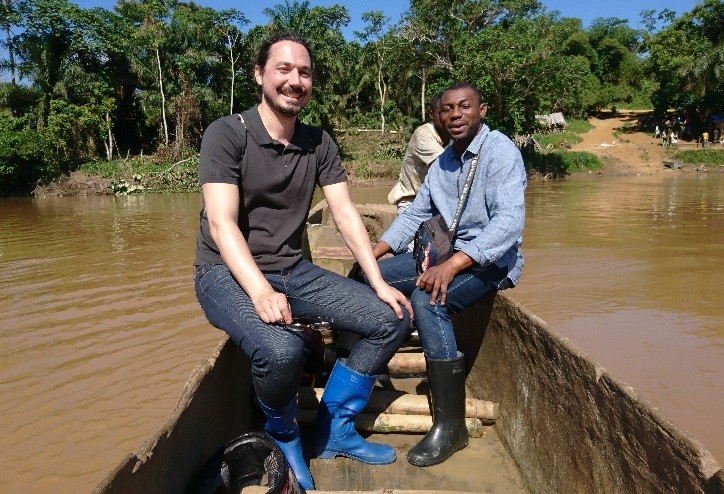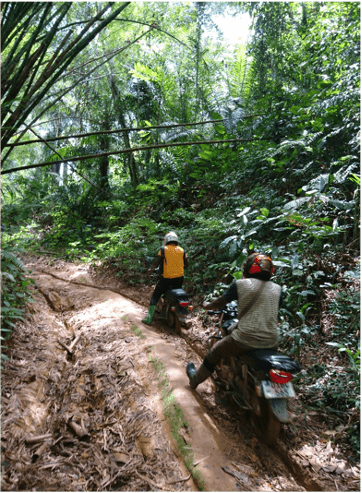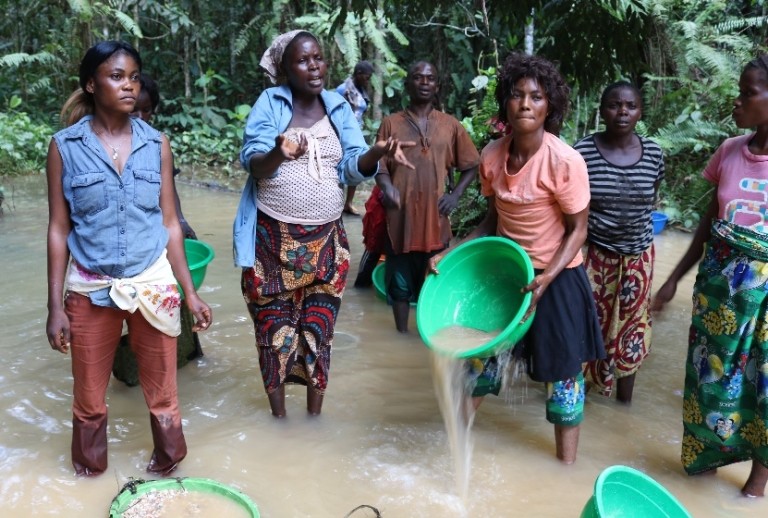Blog
The ITSCI program: An interview with Mickaël Daudin

Pact is proud to be the lead on-the-ground implementer of the ITSCI system. This article was originally published in the October 2020 issue of the Tantalum-Niobium International Study Center Bulletin, and is posted here with permission.
In Bulletin #182 we marked the 10th anniversary of the ITSCI Programme, the traceability and due diligence program for tantalum, tin and tungsten (3T) minerals operated by the International Tin Association and T.I.C. and implemented on the ground by Pact, a US-based international not-for-profit organisation.
Here Mickaël Daudin (MD), Pact's Manager of the ITSCI Programme is interviewed by T.I.C. Director, Roland Chavasse (RC) about how Pact undertakes the day-to-day field operations of ITSCI, including working with governments, building the capacity of ITSCI member companies and partnering with local NGOs to help secure, formalise and improve the livelihoods of 3T artisanal and small-scale miners (ASM).
RC: Thank you for making time to talk with us today. What was the first thing you learned when you were assigned to the Pact team operating the ITSCI Programme?
MD: The first thing I learned was that logistics matter. Going from place to place can take a lot of time. In my last trip to Kalima, Democratic Republic of Congo (DRC), I landed at Kigali airport in neighbouring Rwanda, drove for four hours to the DRC border at Gisenyi/Goma and then boarded a one-hour flight to Kindu, the provincial capital of Maniema Province. For the last leg of my journey, I crossed the Lualaba River and drove four hours before reaching Kalima, where I was to be based while visiting mine sites in the area.

RC: What happened when you reached Kalima?
MD: In Kalima, I visited the Filon mine site. To get there I took a 30-minute motorcycle drive to the shore of the Ulindi river. Then we boarded a pirogue [a long, narrow canoe made from a single tree trunk] with our motorcycles to journey across the river. Once across we undertook another three-hour drive and one-hour walk (pushing the motorcycles where the road was impassable) to finally arrive at the mine site. All of this for only 35 km! For the field teams, this was not a bad journey. During the rainy season, it can be much worse. Some parts of the road have been nicknamed 'the swimming pool'.
RC: That's not an easy commute! What do you typically do when you arrive on site?
MD: During my visit to Kalima, I also met a formidable group of women miners working to support their families, despite the hard conditions. They told me how, thanks to ITSCI legitimizing the Filon site, they are no longer arbitrarily stopped on their way to the next trading town and forced to make illegal payments. This means more money in their pockets to support their families. To me, this is ultimately what ITSCI is about. Mineral resources are finite, and we have one chance to help artisanal miners benefit from these resources in a safe environment, free from abuses and human rights violations. The tremendous work of our field teams, as an important part of all ITSCI's systems, makes this possible; securing livelihoods through perseverance and shared success.
RC: Is the journey to inspect a mine site always so challenging?
MD: Not always, but this is far from being an uncommon scenario for reaching a site. We monitor over 2,000 sites across the Great Lakes Region of central Africa and the long distances between places makes having local teams deployed on the ground, in the mining areas, critical to success. Site visits are part of the first step in integrating a mine in the program - conducting a baseline study. This includes visiting the site and collecting information, through interviews and additional source verification, such as who is working there, in what conditions, what state services are on site, how is the overall security in the area, are there any abuses at the site, are armed groups nearby, and more. The baseline study is about more than the site; it is about the entire route, starting from the moment you leave the closest ITSCI office.
RC: How many site visits does ITSCI make each month?
MD: On average, ITSCI field teams conduct around 400 mine site visits every month to monitor activities and follow up on risks and incidents. But visiting a site is not about ticking boxes. It is about listening to what miners have to say, observing activities, asking questions, and verifying information, assessing its plausibility and credibility, and ensuring its accuracy.
RC: And beyond logistics, what else does Pact work on, on behalf of ITSCI?
MD: Beyond logistics, implementing ITSCI on the ground includes continuously working toward improving the way we are working, addressing gaps, adjusting ITSCI procedures to local needs and enhancing management. It also takes partnership. For example, in North Kivu, improved tagging procedures were developed in 2018 to improve transparency at the different stages of mineral extraction and processing, and to improve accountability of state services and miners. ITSCI field teams held bilateral monthly meetings with the Provincial Director of SAEMAPE, the state technical service in charge of ASM in the DRC, as well as countless meetings with other state services, cooperatives and concession owners to explain the reasons behind the changes, raise awareness about the importance of the changes to the credibility of minerals on the international market. This was essential to gain their buy-in, and follow-up continues even today. Whenever new recommendations for change are made, field teams begin the cycle again, making new visits and setting up new meetings. This process is the core of ongoing monitoring, but achieving results is about trust. Bilateral meetings like those we held with SAEMAPE lay the groundwork for multi-stakeholder committee meetings, chaired by local authorities and including state services, security forces, mining operators, civil society and ITSCI teams, who meet monthly to review mining activities and further embed and improve processes.

RC: How many multi-stakeholder committee meetings take place?
MD: Well, there are currently 47 local and provincial committees in the DRC, and in 2019, we facilitated 67 such meetings, where security, government, industry and civil society partners agree upon and enforce risk mitigation measures. At these meetings ITSCI field teams share information on recorded incidents, providing guidance on what should be done to mitigate and resolve the incidents. Sometimes this can be challenging, particularly if it is related to allegations of abuse by stakeholders who are in the room.
It requires a high degree of sensitivity and diplomacy, while maintaining trust, raising awareness of the implications of incidents in the mineral supply chain, and strengthening the capacity of stakeholders to follow DRC laws, international regulations and due diligence. ITSCI's teams have developed important relationships with senior officers in the national Congolese army and mining police, which have contributed to them taking actions or sanctioning responsible individuals. Without trust, we could not resolve risks and achieve this kind of success.
RC: How has Covid-19 impacted your work in the region?
MD: Covid-19 has had unprecedented impact on our work and resulted in significant budget cuts. Today, it has become even more critical to sustain the successes and impact we had achieved before the pandemic hit. We continue to traverse the challenging terrain to make site visits, wearing our masks and keeping our physical distance wherever possible. We are continuing to connect with stakeholders via mobile phones when in-person meetings aren't possible. Because ITSCI is about being heard and listening. It is about recognizing problems and finding solutions, instead of looking away. It is about holding government services and companies to account and having them take concrete actions to address the risks and conduct their due diligence.
RC: Mr. Daudin, thank you very much for your time today.